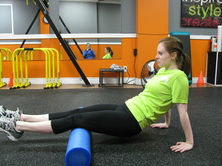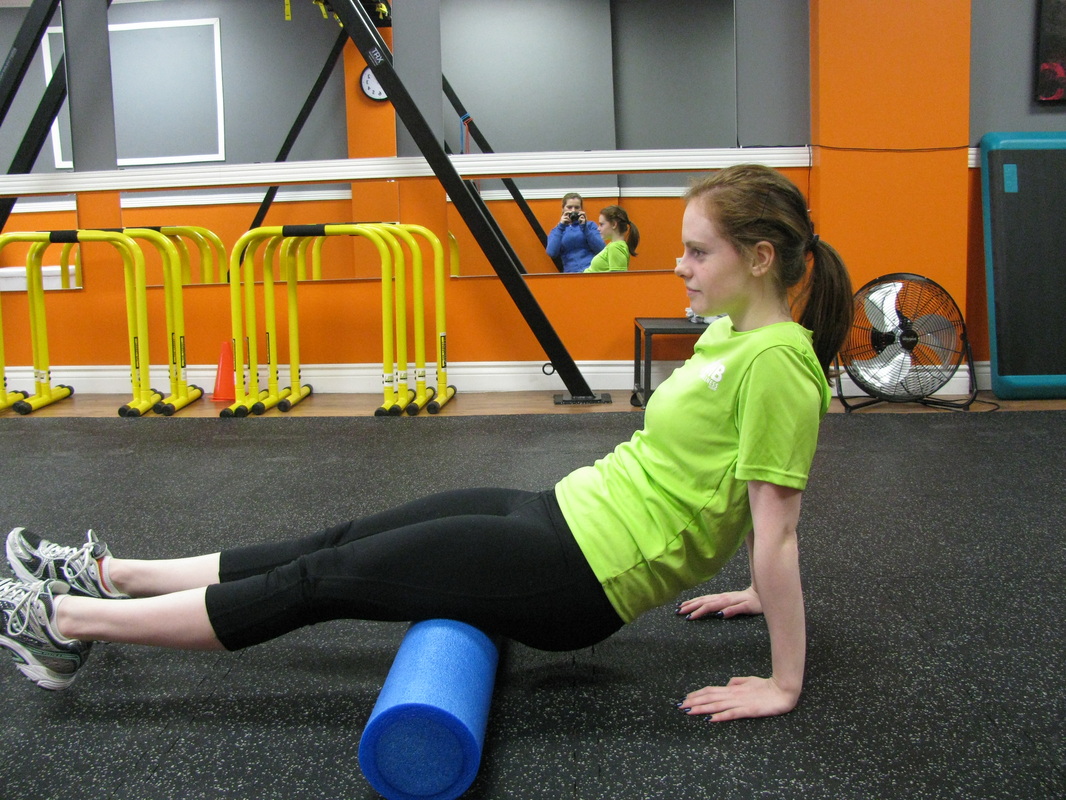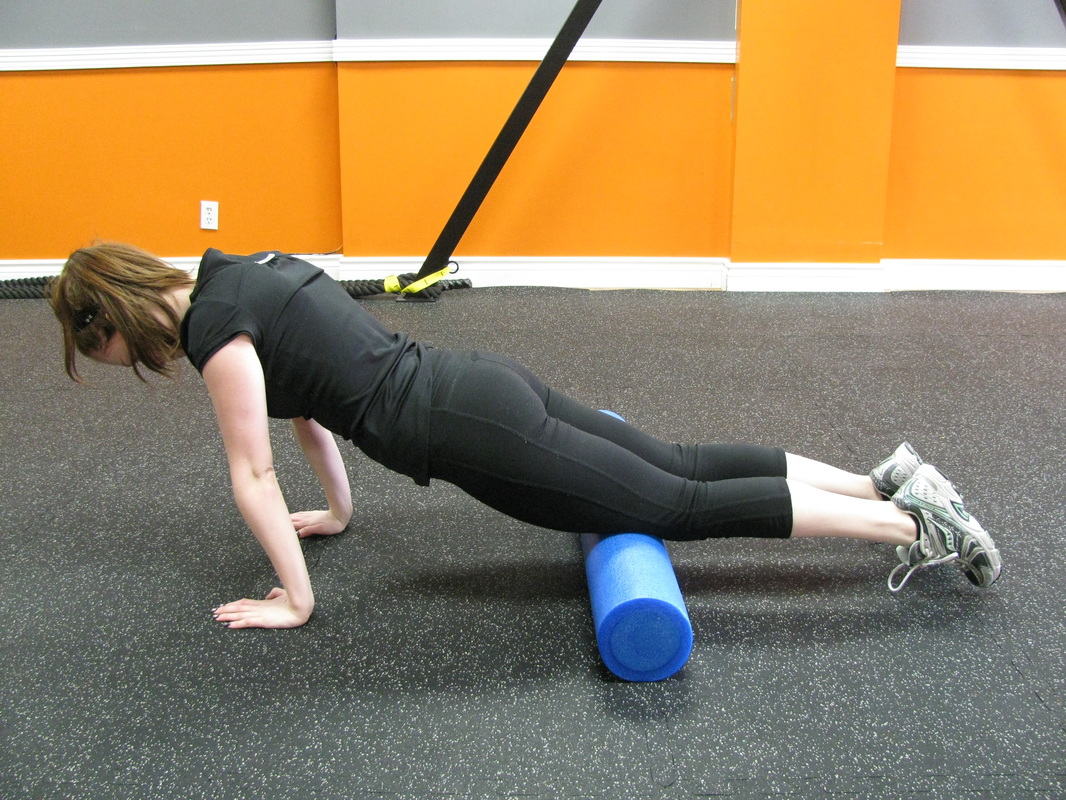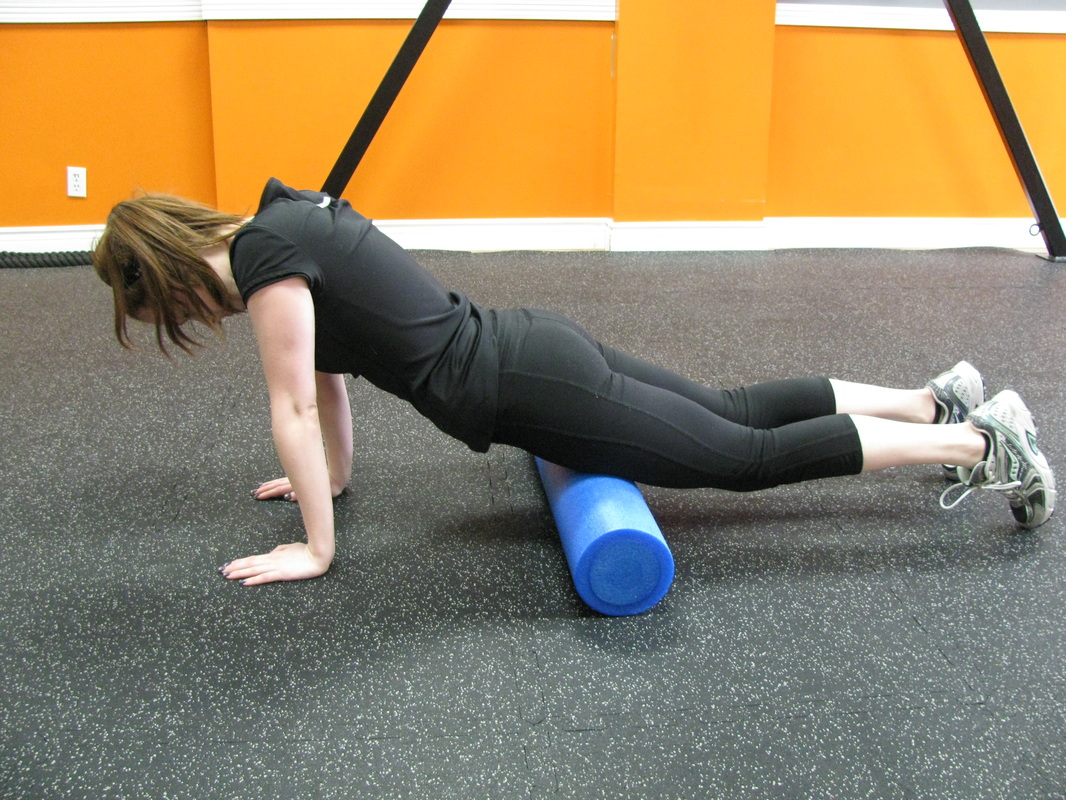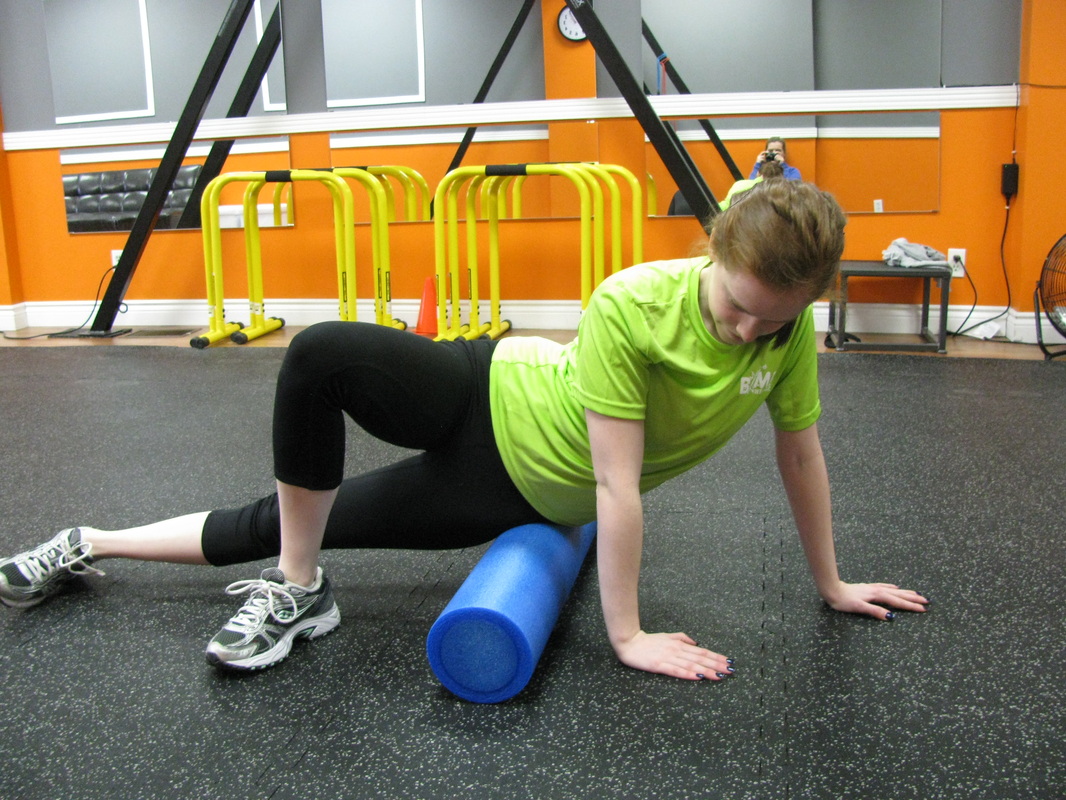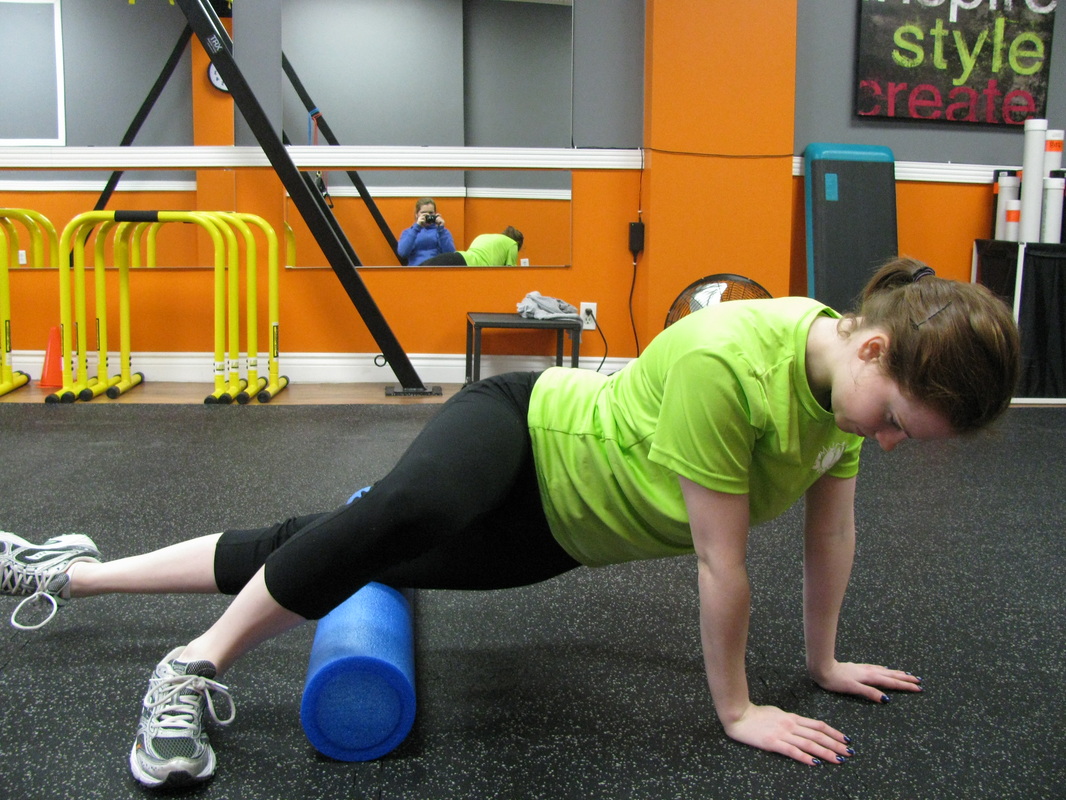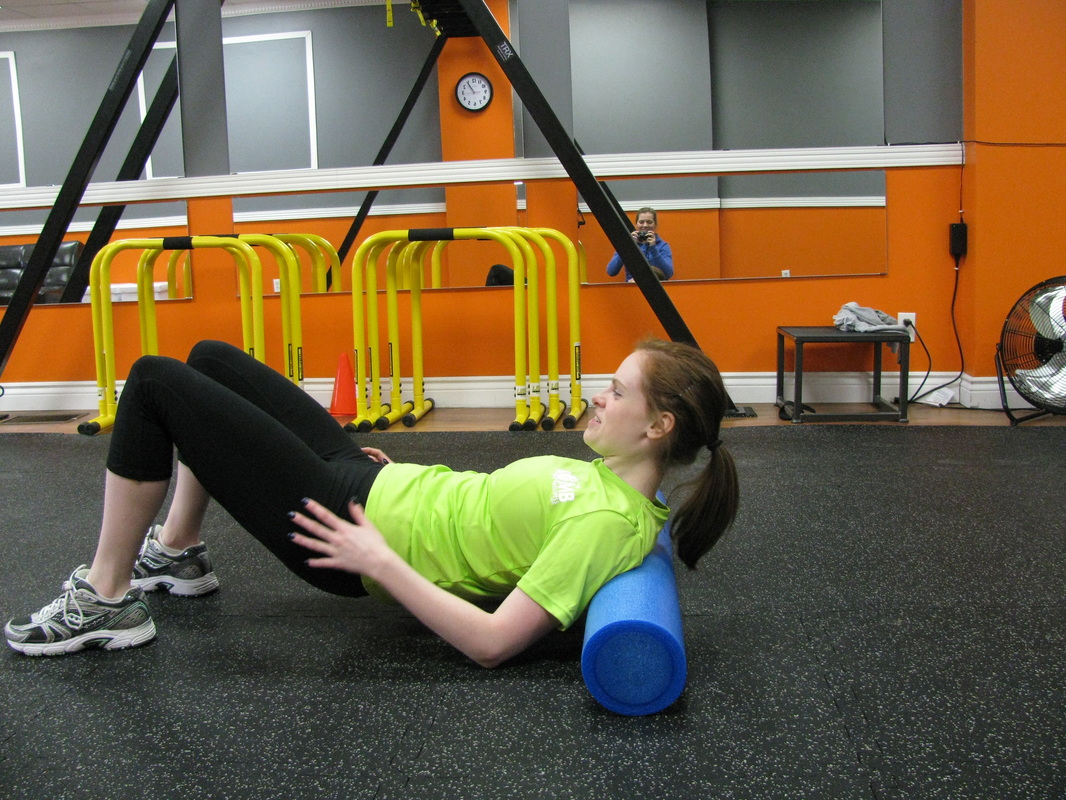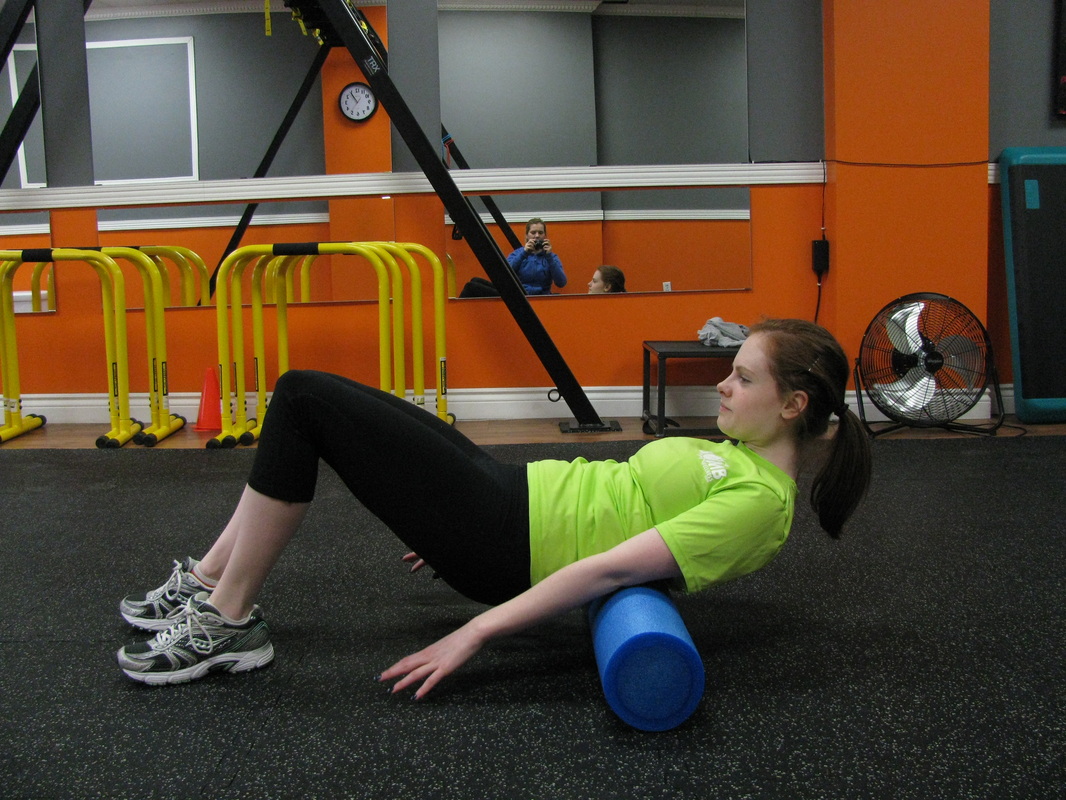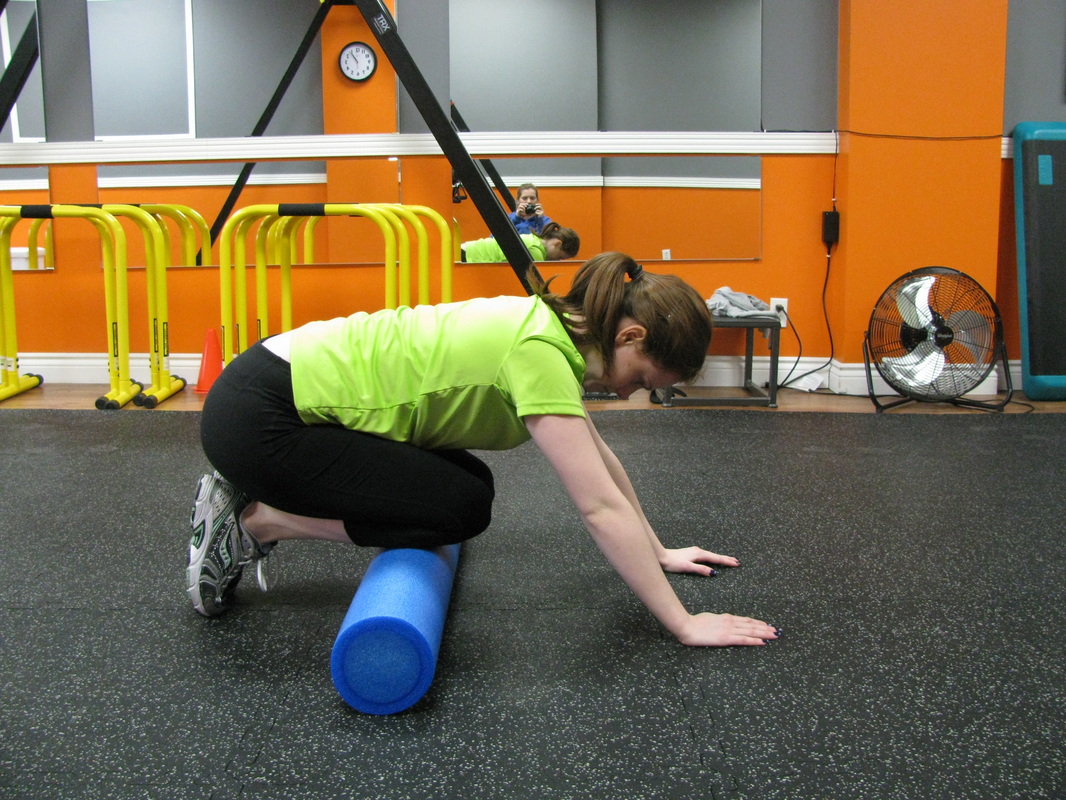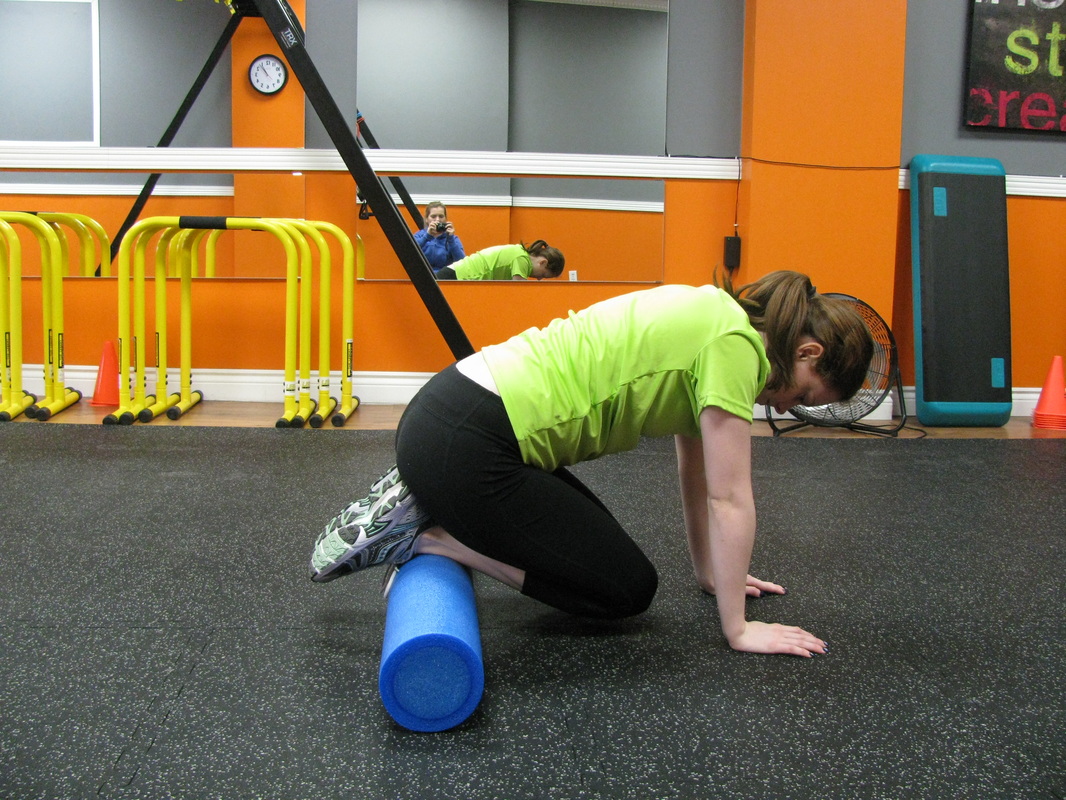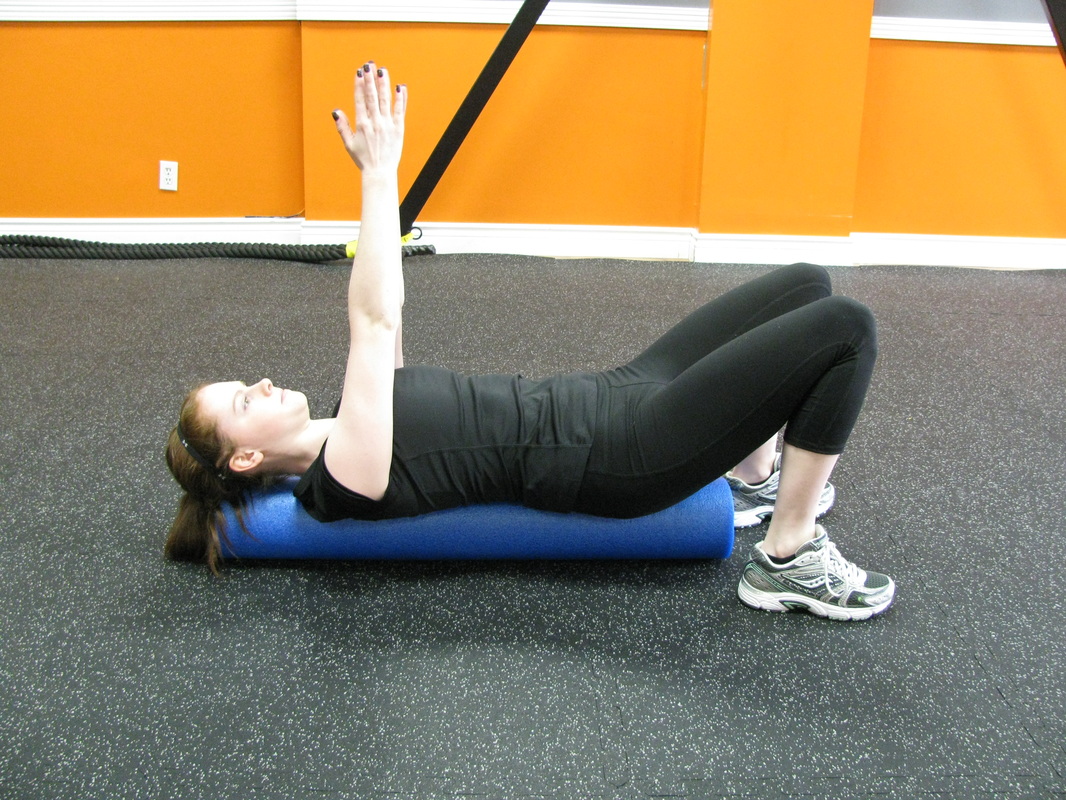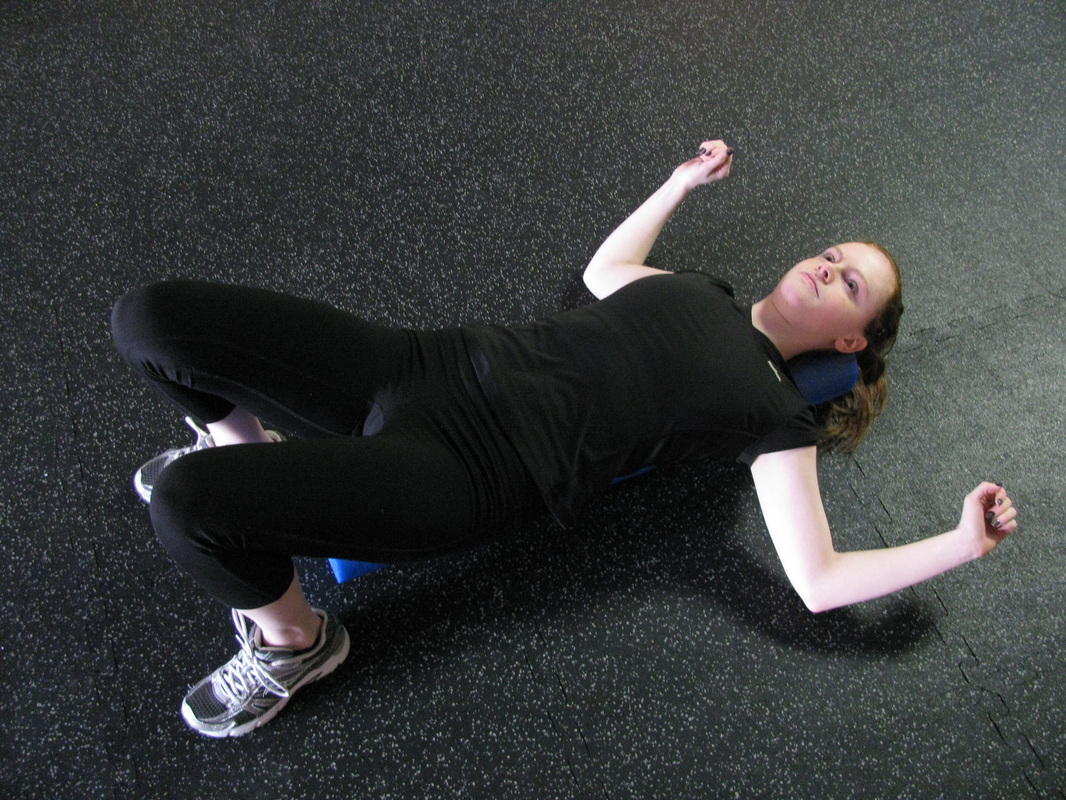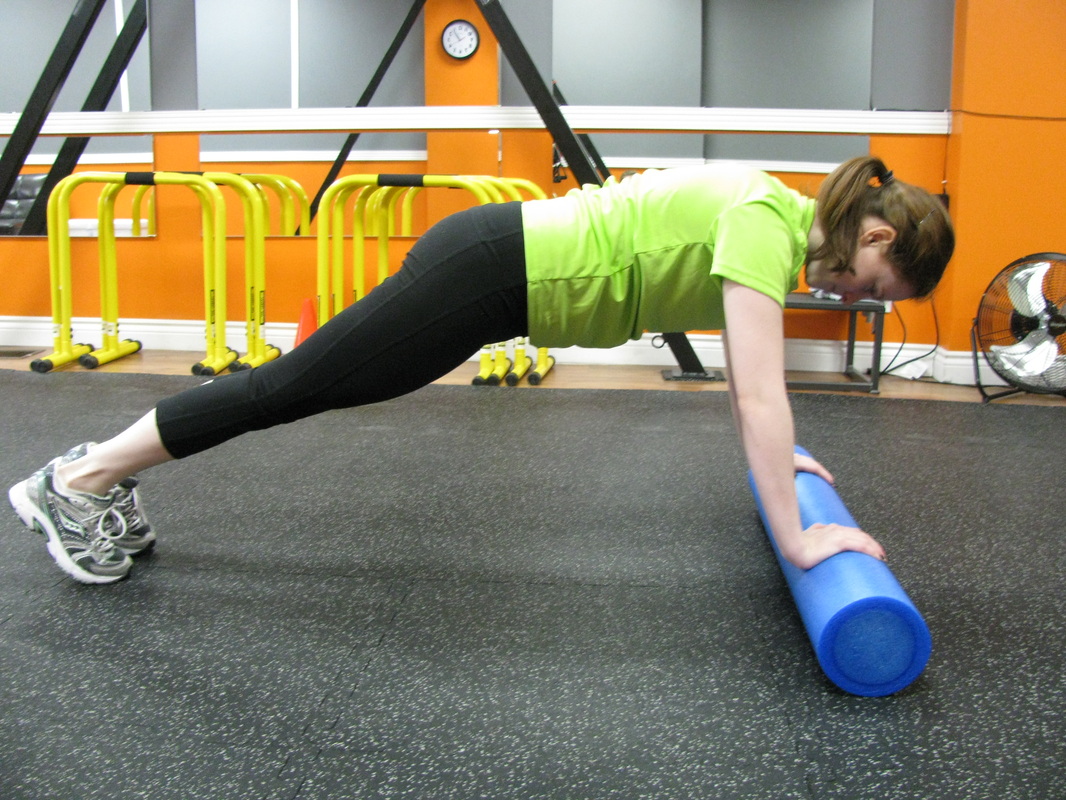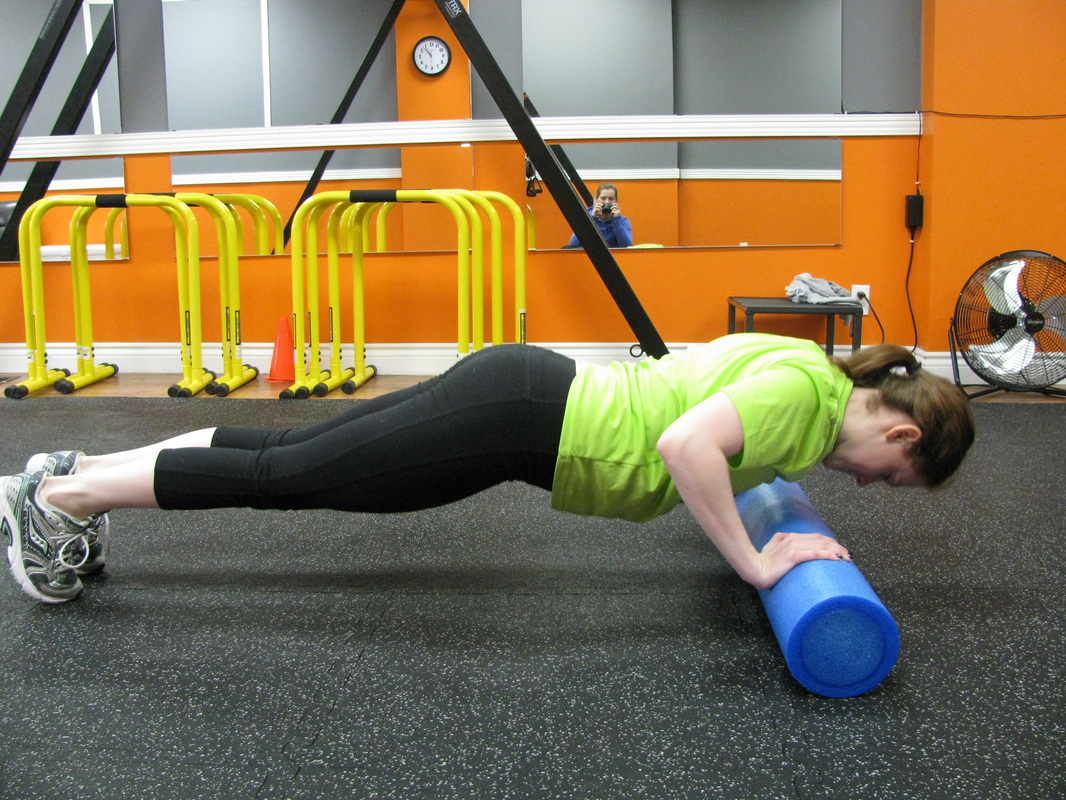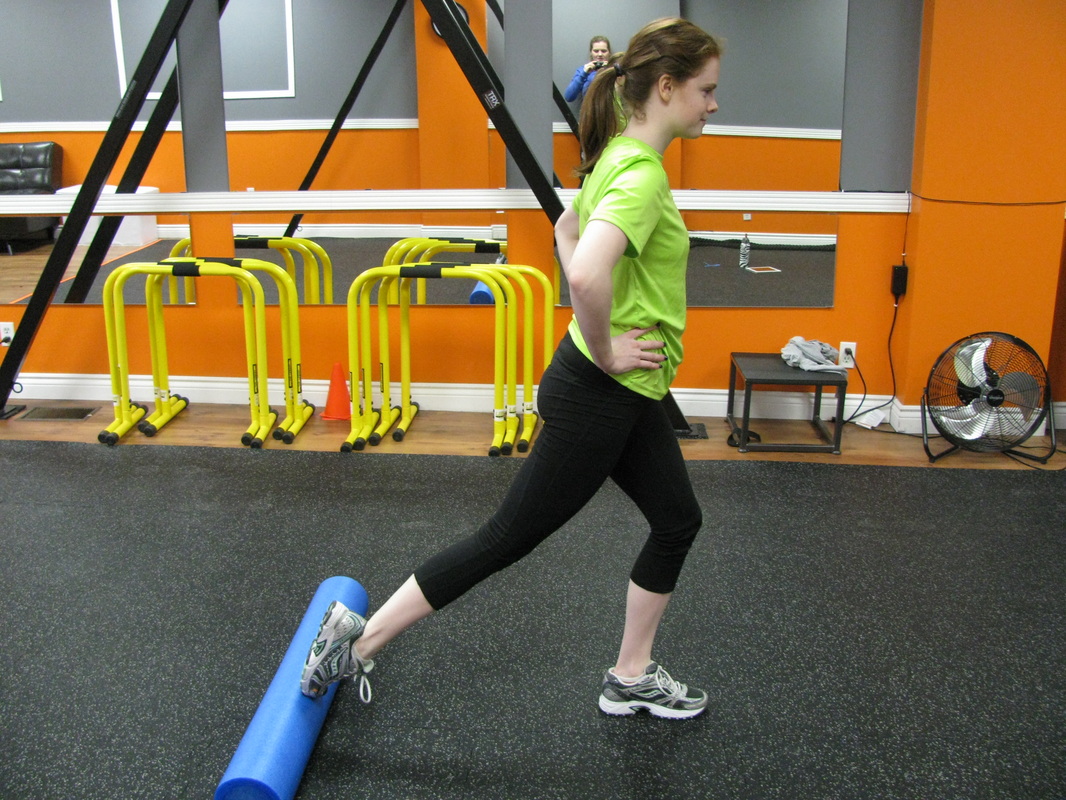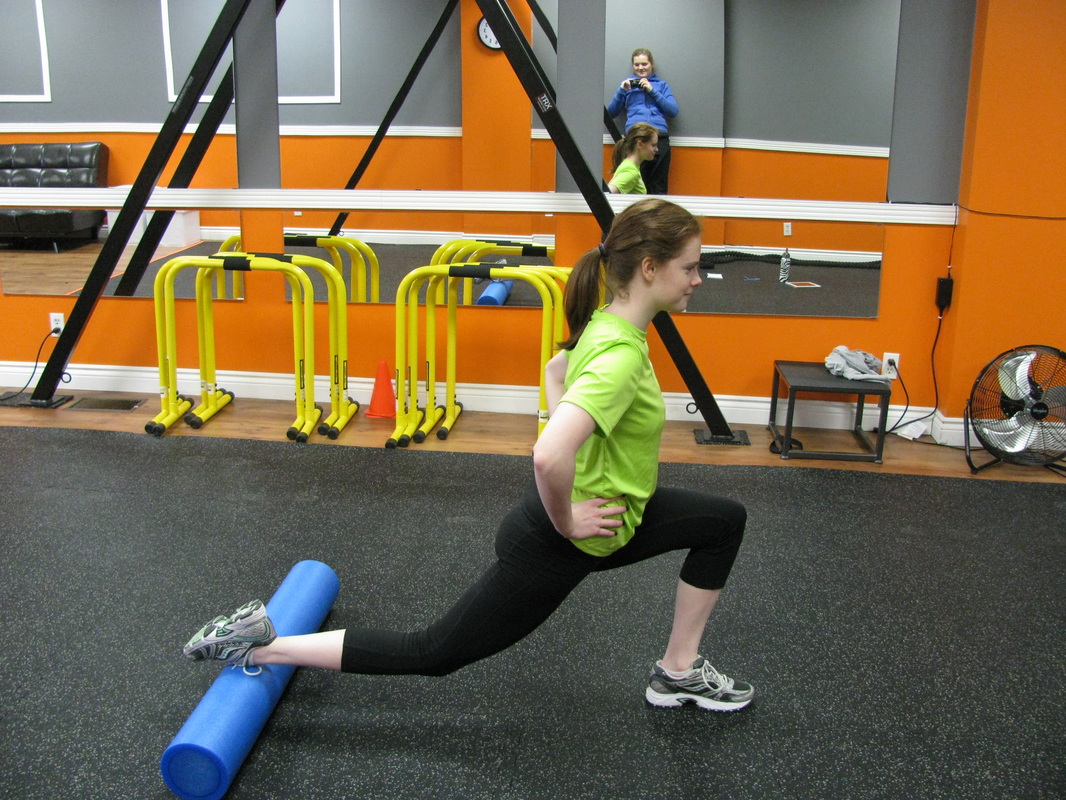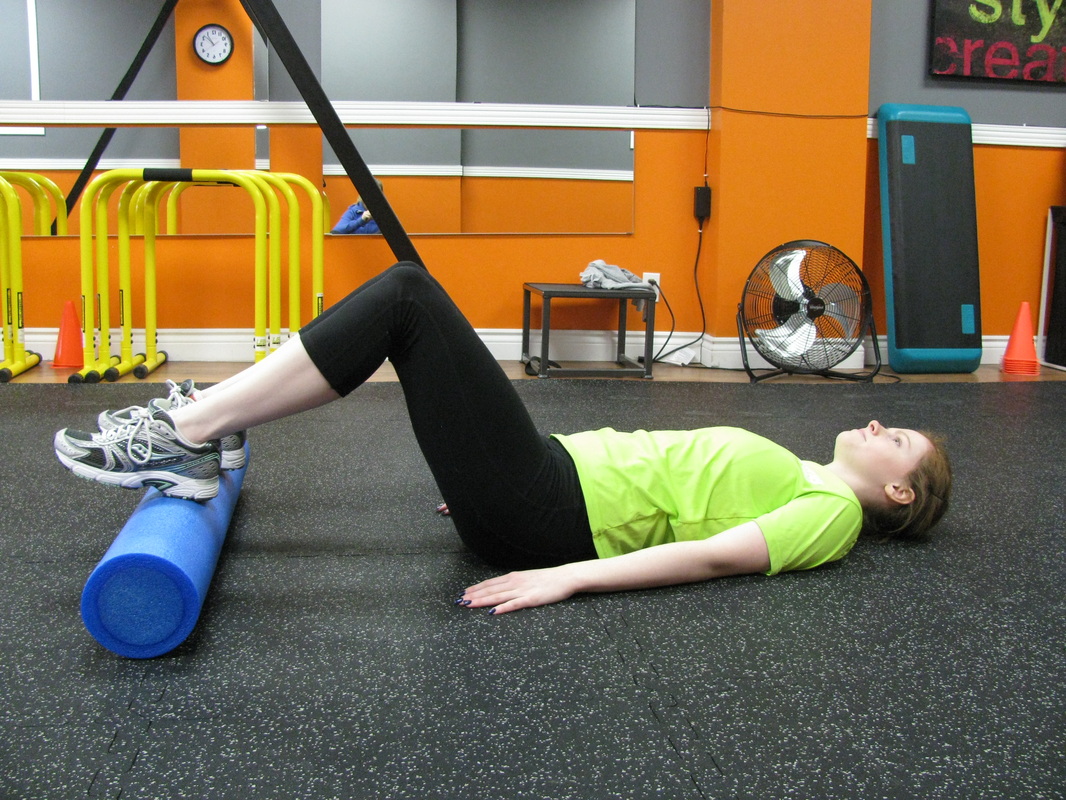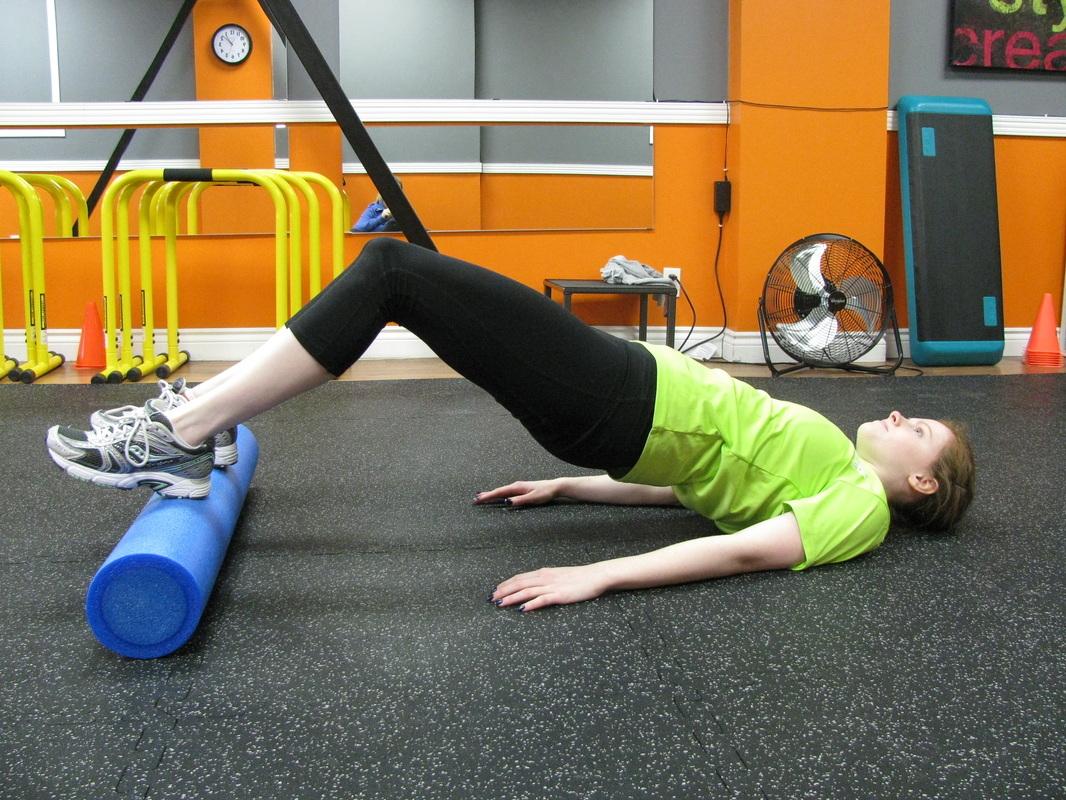You'll hear us harp on at the studio about the excellent benefits foam rolling has on your body. We recommend you should roll out 10 minutes before and after a workout. Fascia is a layer of fibrous tissue, much like a spider's web, that surrounds muscles. If not addressed, this web can tighten around the muscles that stunt their growth. By foam rolling regularly we keep this fascia nice and loose so that when you do workout, you get the maximum work out of that muscle. Rolling also helps correct muscle imbalances, and is great at preventing injury.
In this blog, Thalia and Michelle, show us their top 9 foam roller exercises. If you find any particular tight, or painful spots you should hold the position until you feel the muscle loosen up. If your shoulders, and elbows get sore, you can use a bolster or cushion to support you. Enjoy!
Hamstring Massage Start with your foam roller under your knees, and lift up onto your hands. Roll up your hamstrings towards your glutes, and back again. | | |
Quad Massage Lay face down with the foam roller just above the knee, Using your arms, move your body backwards, in turn, moving the foam roller towards the hip. Men, make sure you don't roll too far!! | | |
IT Band Massage
(aka "The Screamer!") Turn onto your side, and place the foam roller near the hip. Check that your hips are stacked on top of each other. Slowly roll forward all the way to the knee, and back. | | |
Back Massage Lie with the foam roller under your shoulders. Place your arms across the chest, and roll towards the hips. This targets the Erector Spinae. | | |
Shin Massage Facing down, place the foam roller under your knees, heels to butt. Using your arms for support, roll forward towards your ankles, and back. | | |
Chest Stretch Lay on the foam roller, face up with your neck supported. Bring your arms out to the side, and slowly try to bring them down to the floor. To make this harder, bring your arms further overhead. | | |
Push Ups Place hands shoulder width apart on foam roller. Bend at the elbows to lower your chest. Squeeze your pecs together and push back to the start. The instability of the roller makes this extra tricky. | | |
Lunge Place your toes of one foot on the roller. Bend at the front knee, sitting into a lunge, as the roller heads towards your shin. Push off the front heel back to the start. | | |
Bridge Lie on your back with your heels on the foam roller. Lift the hips towards the ceiling, forming a straight line, knee to shoulder. Lower under control. The instability of the roller really engages your stabilizing muscles. | | |

With the festive season now in your rear-view mirror, turkey guilt amongst other things will drive many people towards resolutions for the New Year, intent on positive change. However, year-after-year, people fall off the wagon as early as February and slide back into the same old routine, with the same old habits. So here to help you out are 6 ways to stay on track, and adapt to your new routine.…
1. Know why you want to change your lifestyle?
The most common reason people decide to work out is that they’ve had enough of being overweight and out-of-shape, physically and mentally. They throw down a few hundred dollars on a gym membership with the goal of “getting fit". Unfortunately, “I just want to get fit” is not going to help you in the long run. You need to ask yourself “Why do I want this change?”, and you need to create a specific goal. Whether it’s to fit into a bridesmaid dress in 6 months or to sculpt a great body so you can get laid twice a week, a quantifiable goal is much easier to keep you on track. The clearer a path can be seen; the easier it is to follow.
2. Make specific time for exercise in your schedule
We say it over and over, and we’ve checked our stats - people who book classes ahead of time, come to our gym more often than those who don’t. We even have members who go old school and pull out a paper diary and mark the classes in their schedule. You wouldn’t miss a doctor’s appointment or a finance meeting with the bank, so your training appointment should be no different. Once you adapt to that mindset it will be hard for you to skip out so often.
3. Commit to a 21-day trial
Research has shown it takes 21 days to make or break a new habit. So if you decide to work out 4 days a week, do it religiously for 3 weeks, let nothing get in the way. You’ll find that if you keep turning up, you will notice a mysterious momentum that will take the process way beyond 21 days.
4. Identify reinforcing habits
Habits do not exist in isolation. This is an area where exercising really excels. It affects you in such a massive, positive way that reaches out to other areas of your life. Those who work out regularly, also start to eat healthier, socialize more, get better at their job, etc... This is where people experience a complete lifestyle change. So identify other good habits to confirm what you’re doing is working.
5. Have a back-up plan
Hugely important! The number one reason people can’t stick to good habits is that life gets in the way, and they find an excuse to pull out. We have a number of cancellations on a daily basis. Some come to another class instead; others give in and skip a week. Have a back-up plan. If you miss a class, and can’t replace it, work out at home, or in your cubicle at work. Who cares if your colleagues look at you funny? You won’t be the one absent with chronic back pain.
6. Track your habits
I’m a fan of apps and websites that can track your workouts, calorie counts etc... but like everyone else I find it hard to keep it up-to-date accurately, and it can be boring. You want to concentrate on fitting that work out in and when that good habit sticks you can incorporate this into your routine.
So what else can you do? Do what a 15-year old teenager with acne would do, and keep a diary. Take 5 minutes on your way to work to write down positive notes on how you feel, what progress you’ve made and what you will do that day to maintain and progress your good habits. This may seem drastic to some people, even lame, but we all make task lists at work, so why not do it for you. Professional athletes in all sports do this. It’s part of sport psychology, which also incorporates a lot of positive visualization. Keep a checklist to score off your exercises when you complete them and mark down the times you hit personal bests or you reach the next step towards your goal.
Kevin
This blog was modeled on a fantastic article in Business Insider. I highly recommend you read it as it’s relatable to all areas in your life, not just fitness.
http://www.businessinsider.com/6-ways-to-make-good-habits-stick-2010-12?op=1
